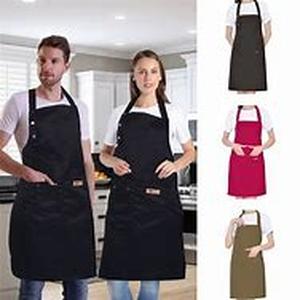
Lead Aprons Are One Of The Required Garments For People Who Are Specializing In X-ray. In Fact, These Garments Are Now Commonly Used By Those Who Are Working Under Radiation Or Those Who Are In Diagnostic X-ray Facilities In Order To Protect Them From Whatever Dangerous Elements There Is During The X-ray Transmission.There Are Actually Different Sizes Of Lead Aprons Available On The Market Today. With These Varying Sizes, It Then Necessary To Make Sure That There Is Good Fit. Lead Aprons Also Vary In Lead Equivalence. According To Some Experts In This Field, A Lead Equivalence Of 0.5 Mm That Is Recommended In The Safety Codes Particularly Limits The X-ray Transmission Through The Lead Apron To Less Than 10 Percent At 150 KVp. And, At 7- KVp, Such Lead Apron Would Provide Great Protection As It Limits The Transmission To Less Than 1 Percent. However, It Is Necessary To Note That The Thicker The Lead Apron, The Heavier It Is. As Such, The Users Of These Specialized Garments Might Optimize Their Choice Of Lead Aprons In Accordance To The Maximum X-ray Potential Used During The Procedures. Generally, Lead Aprons Are Expensive Protective Items. As Such, They Should Be Kept In Good Condition For As Long As Possible. As Numerous Studies Have Found Out, The Lead Aprons Are Usually Damaged Due To Incorrect Handling, Apart From Deterioration Due To Aging. It Is Commonly Noted That The Lead Aprons, Even Those With The Latest Improved Materials, Generally Tend To Crack When They Are Being Folded Or Laid Over A Pointed Object. The Lead Aprons May Even Crack More Even They Are Cross Folded. Therefore, It Is Necessary To Note That When The Lead Aprons Are Not In Use, They Should Be Hung Carefully On Designated Hangers Or Wrapped Over A Reinforced Towel Bar.In Terms Of Quality Control, Several Studies Have Also Found Out That Those Lead Aprons Employed In Medical And Veterinary Facilities Should Be Tested Annually Or As Required Under Outstanding Regulations Or Accreditation Programs, As Well As When A Certain Damage Is Suspected. Most Of The Experts Then Suggest That It Is Better To Choose Lead Aprons That Have 80 KVp And The MAs You Would Use For A Knee Or A Small Animal Radiograph Without Bucky Using A 14x17 Film In Order To Demonstrate The Central Part Of The Apron. Aside From This, Many Experts Hold That If Your X-ray Machine Is Equipped With AEC Function, It Is Then Better To Use Phototiming With Bucky. And, If Any Cracks Or Holes Are Shown By The Radiograph, The Lead Aprons Should Then Be Replaced If The Sum Or Aggregate Area Of The Damage Is The Lead Apron Exceeds 10 Cm.





